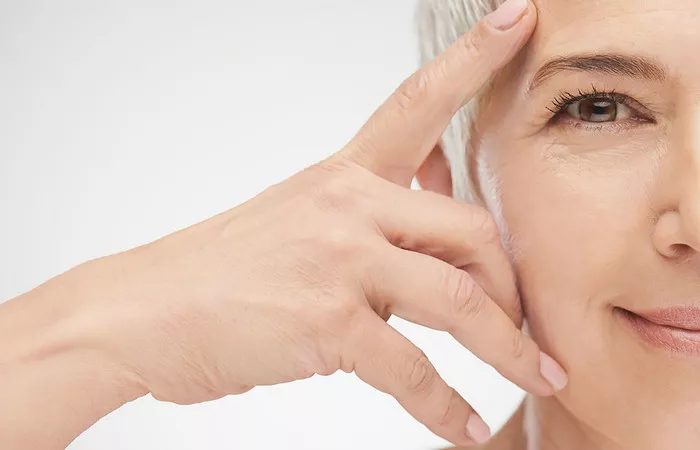Vertical wrinkles on the forehead, also known as frown lines or glabellar lines, are a common cosmetic concern for many individuals. These wrinkles can make a person appear older, tired, or angry, even when they are not. In this article, we will explore what causes vertical wrinkles on the forehead and what can be done to treat them.
What are Vertical Wrinkles on the Forehead?
Vertical wrinkles on the forehead are lines that appear between the eyebrows and above the bridge of the nose. These wrinkles are typically caused by the repeated contraction of the muscles that control facial expressions, such as frowning or squinting.
Over time, these repeated contractions can cause the skin to lose elasticity and form vertical wrinkles.
What Causes Vertical Wrinkles on the Forehead?
There are several factors that can contribute to the development of vertical wrinkles on the forehead. These include:
Aging: As we age, our skin loses elasticity and becomes less able to bounce back from repeated muscle contractions, which can lead to the formation of wrinkles.
Sun exposure: Prolonged sun exposure can damage the skin and cause premature aging, which can contribute to the development of wrinkles.
Genetics: Some individuals may be more prone to developing wrinkles due to their genetics.
Smoking: Smoking can damage the skin and accelerate the aging process, which can contribute to the development of wrinkles.
Repeated facial expressions: Repeatedly making certain facial expressions, such as frowning or squinting, can cause the muscles in the forehead to contract, which can lead to the formation of wrinkles over time.
How are Vertical Wrinkles on the Forehead Treated?
There are several treatment options available for individuals who are concerned about the appearance of vertical wrinkles on the forehead. These include:
Botox: Botox is a cosmetic treatment that involves the injection of a neurotoxin into the muscles that control facial expressions. This temporarily paralyzes these muscles, preventing them from contracting and causing wrinkles to form.
Dermal fillers: Dermal fillers, such as hyaluronic acid or collagen, can be injected into the skin to fill in wrinkles and restore volume to the face.
Chemical peels: Chemical peels involve the application of a chemical solution to the skin, which causes the outer layer of skin to peel away. This can help to reduce the appearance of wrinkles and improve skin texture.
Laser resurfacing: Laser resurfacing involves the use of a laser to remove the outer layer of skin, which can help to reduce the appearance of wrinkles and improve skin texture.
Conclusion:
Vertical wrinkles on the forehead are a common cosmetic concern for many individuals, but they can be treated with a variety of cosmetic procedures. These wrinkles are typically caused by repeated muscle contractions, but can also be caused by aging, sun exposure, genetics, and smoking.
Treatment options for vertical wrinkles on the forehead include Botox, dermal fillers, chemical peels, and laser resurfacing. If you are concerned about the appearance of vertical wrinkles on your forehead, it is important to consult with a qualified healthcare professional to determine the best course of treatment for your individual needs.
FAQs
1. How do I get rid of vertical lines on my forehead?
Vertical lines on the forehead, often referred to as frown lines or worry lines, can be minimized through various treatment options. These may include cosmetic procedures such as botulinum toxin injections (e.g., Botox), dermal fillers, laser therapy, microdermabrasion, chemical peels, and skincare products containing ingredients like retinoids and antioxidants. Additionally, practicing good skincare habits such as staying hydrated, wearing sunscreen, and avoiding smoking and excessive sun exposure can help prevent the formation of forehead wrinkles.
2. What does a vertical line on your forehead mean?
Vertical lines on the forehead typically result from repeated facial expressions, such as frowning, squinting, or raising eyebrows. Over time, these repetitive movements can lead to the development of permanent lines and wrinkles on the forehead. While forehead wrinkles are a natural part of the aging process, they may also be influenced by factors such as genetics, sun exposure, smoking, and skincare habits.
3. What causes vertical wrinkles?
Vertical wrinkles on the forehead, like other types of wrinkles, are primarily caused by the gradual loss of collagen and elastin in the skin, which occurs naturally with age. Additionally, factors such as repeated facial expressions, sun damage, smoking, dehydration, and poor skincare habits can contribute to the formation of vertical wrinkles. Over time, these factors weaken the skin’s elasticity and resilience, leading to the development of lines and creases on the forehead.
4. Can forehead wrinkles be reversed?
While it may not be possible to completely reverse forehead wrinkles, various cosmetic treatments and skincare interventions can help minimize their appearance and prevent further progression. Procedures such as botulinum toxin injections, dermal fillers, laser therapy, and chemical peels can effectively reduce the depth and visibility of forehead wrinkles by promoting collagen production, improving skin texture, and relaxing underlying facial muscles. Additionally, consistent use of skincare products containing retinoids, antioxidants, and moisturizers can help maintain skin health and minimize the formation of new wrinkles.


